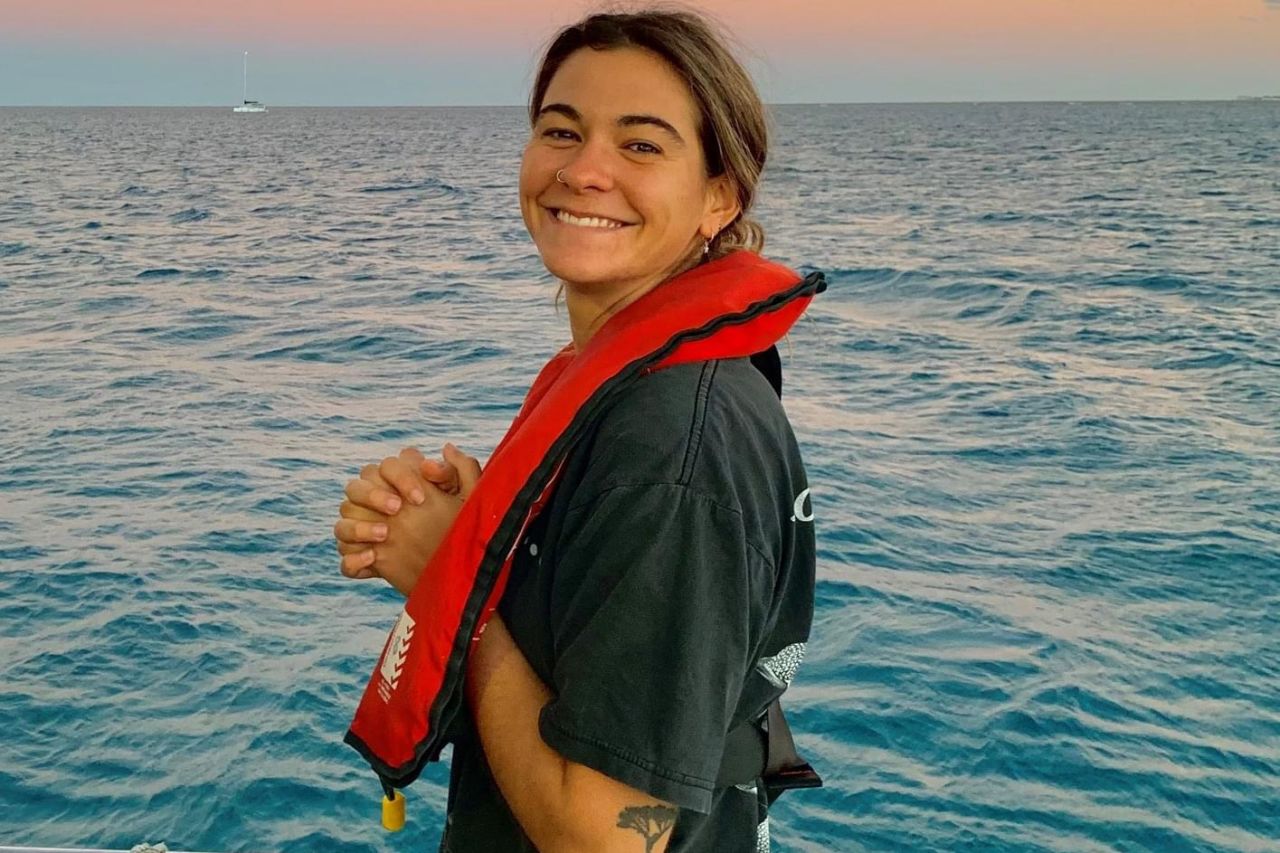Taylah was captivated by her very first snorkelling trip out to the Reef. On a visit to Cairns with her Dad, she went out to Fitzroy Island and swam around for hours. "I couldn't believe that this whole other little world and community existed underwater. I loved the immediate buzz of life I saw and felt every time I peeked beneath the surface."
Taylah has been hooked ever since. After studying Marine Science at University, she now gets to spend hundreds of hours on the Reef each year.
"I'd known for a long time that I wanted to work in coral reef conservation. After seeing the incredible diversity and life on the Great Barrier Reef, and learning how important an ecological asset it is, I wanted to join the wonderful mass of people that are dedicated to protecting it."
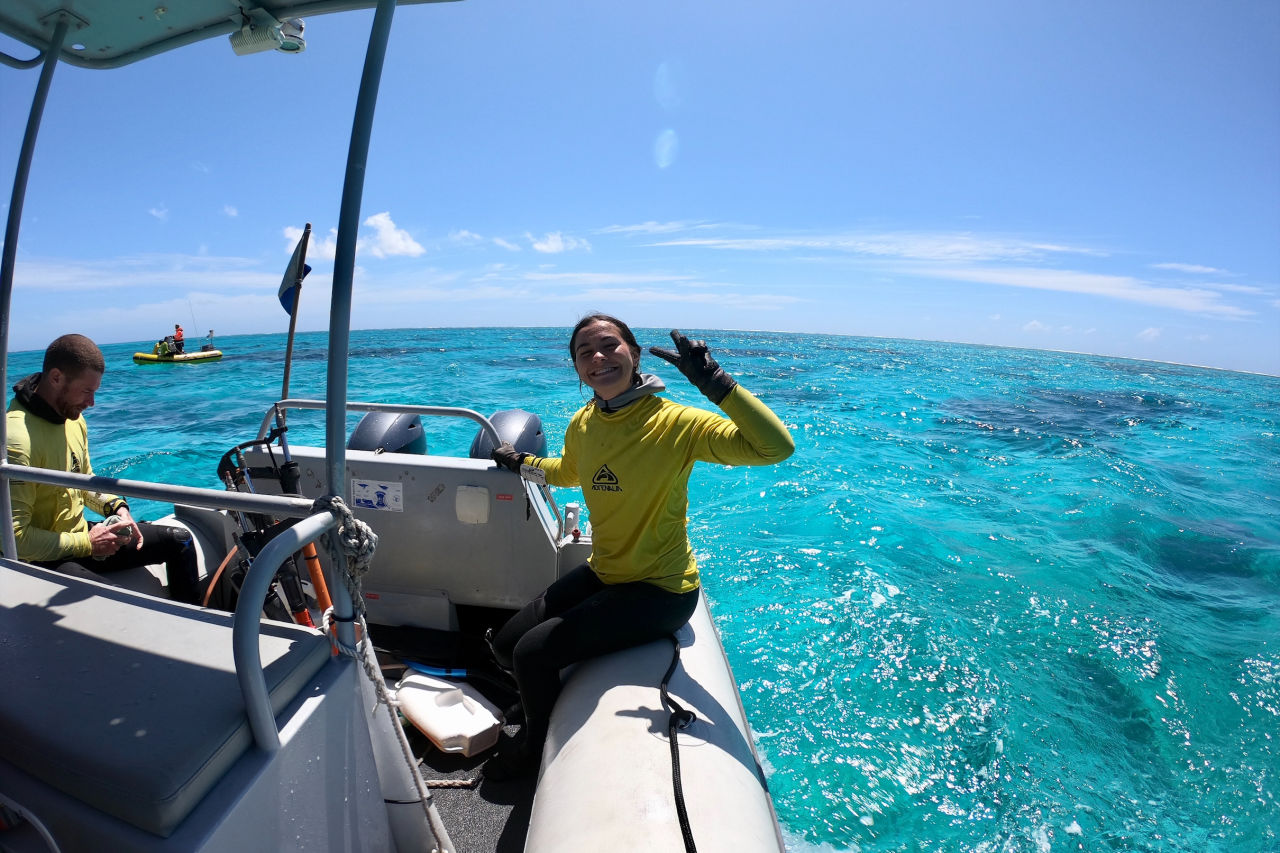
Onboard RV Coda undertaking manta tow activities at Fitzroy Reef. Credit: Flying Fish V crew/Georgia Dayman
Of the many threats that our Reef faces, Taylah focuses on a very particular one: crown-of-thorns starfish, also known as COTS. Despite being native to the Pacific, these starfish can wreak havoc on coral ecosystems when their populations grow to unsustainable numbers. COTS are voracious predators, and their favourite food is coral. After eating, COTS leave stark white marks, known as feeding scars, which are telltale signs for divers looking for evidence of these spiny invertebrates.
Taylah is part of the incredible, multidisciplinary effort that is fighting to tackle COTS outbreaks on the Reef. The COTS Control Program, delivered through a partnership between Great Barrier Reef Foundation, the Great Barrier Reef Marine Park Authority and the Reef and Rainforest Research Centre, is helping lower the risk these starfish pose to our already vulnerable reefs.
"I actually wasn't aware of the significance of the COTS issue until a few years ago, but it's been such an eye-opening experience to see what an effect these animals can have on the Reef, and occasionally a little overwhelming and sad. But I've also witnessed first-hand what a profound difference that the COTS project has made in protecting coral on the Great Barrier Reef and it's so empowering knowing that we're helping to sustain coral cover in real-time."
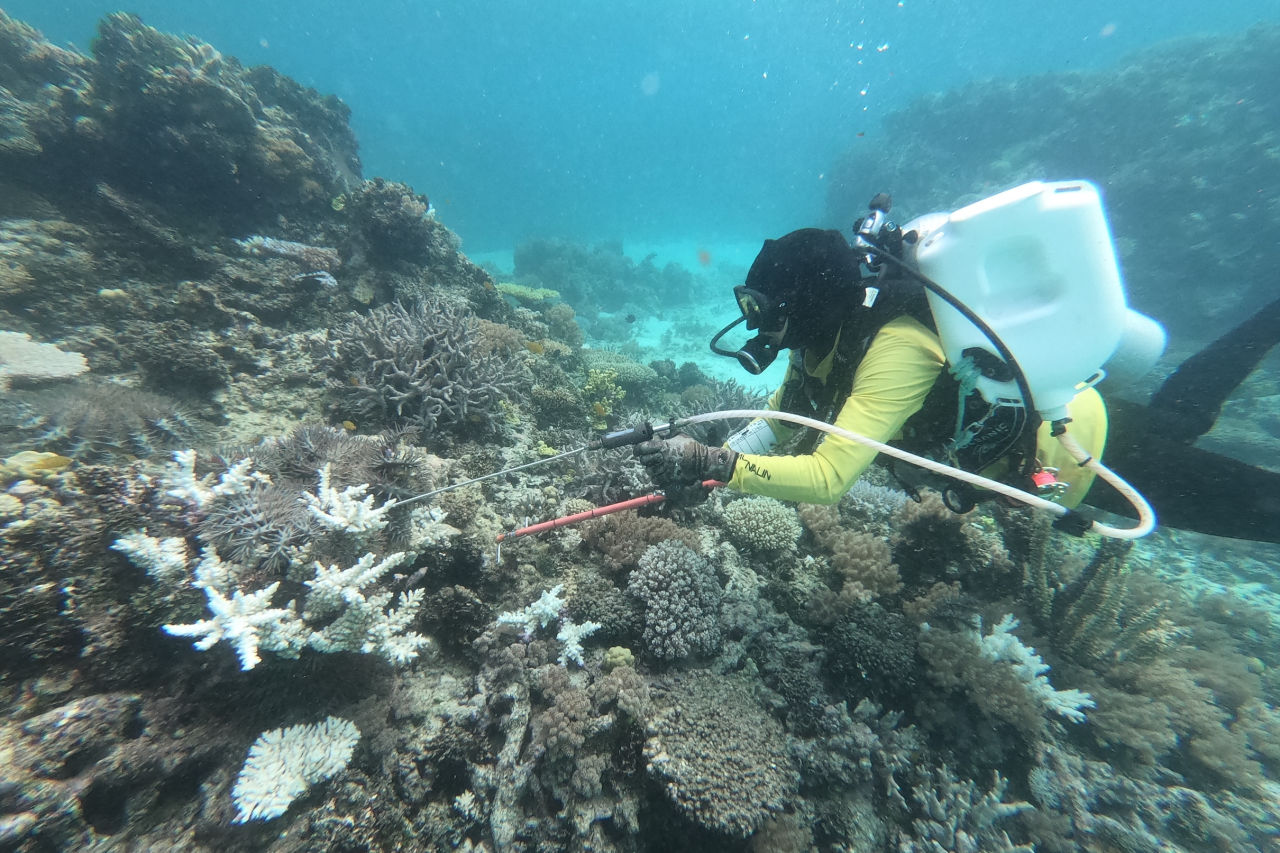
Undertaking COTS culling at Heron Island Reef, Capricorn Bunker group. Credit: Flying Fish V crew/Elizabeth O'Connor
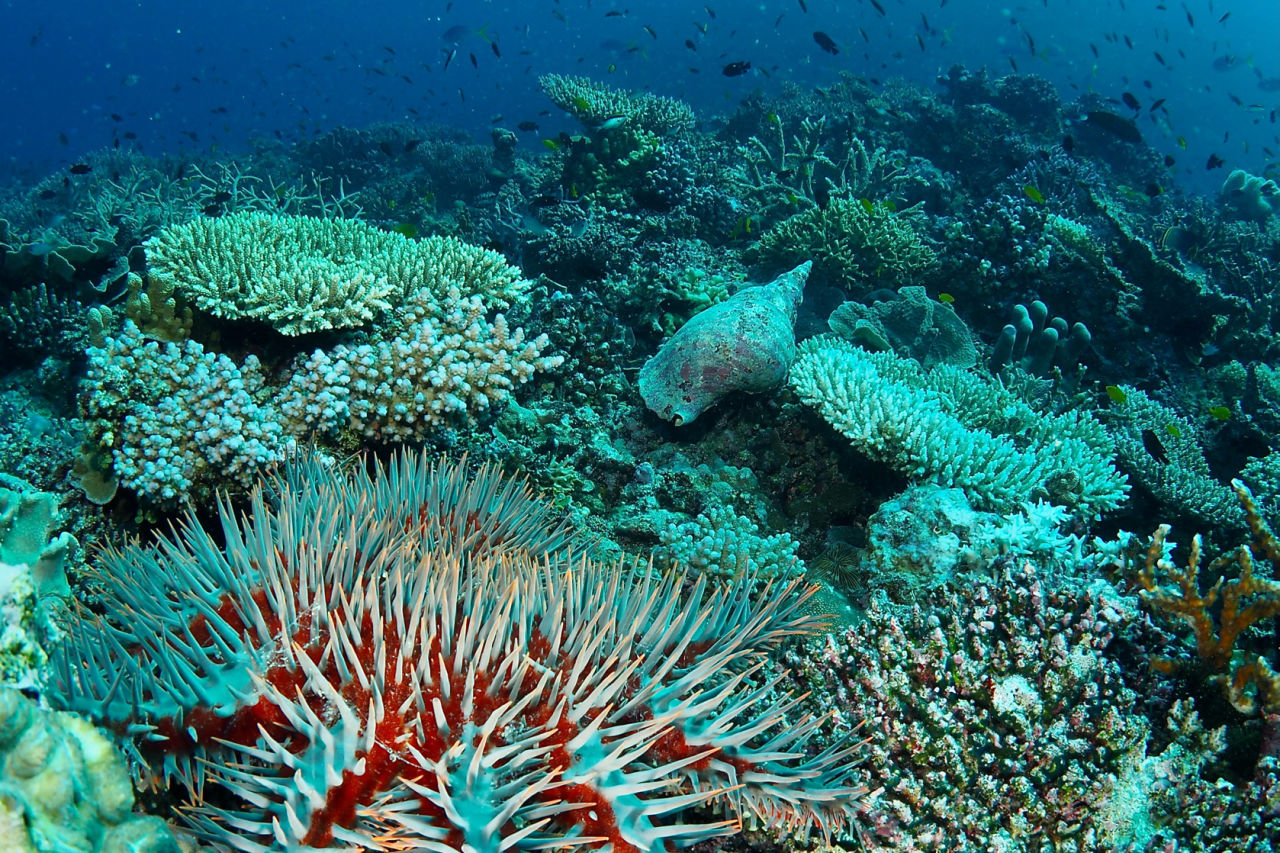
Crown-of-thorns starfish. Credit: Rick Abom/RRRC
Taylah is now a full-time diver and voyage leader, working on Blue Planet Marine's COTS control vessel. The teams usually go out for two weeks at a time. On a typical day, their primary objective is culling, but they also carry out surveys to assess the state of each reef they visit.
"When we arrive at a new reef, we would go out and conduct surveillance, and then depending on what we see and what we find, we'd go out in the afternoon and maybe do two or three cull dives."
What Taylah appreciates the most about her job is seeing the direct impact that her efforts have on coral reef health.
"When I first started we were seeing outbreaks in the Capricorn Bunkers all the time and now most of the reefs are in maintenance mode and we're pretty much just doing surveillance on them and making sure they stay that way, which is really cool. Being part of the hands-on control is really rewarding, and you end up having this really personal relationship to the Great Barrier Reef and specific reefs as well."
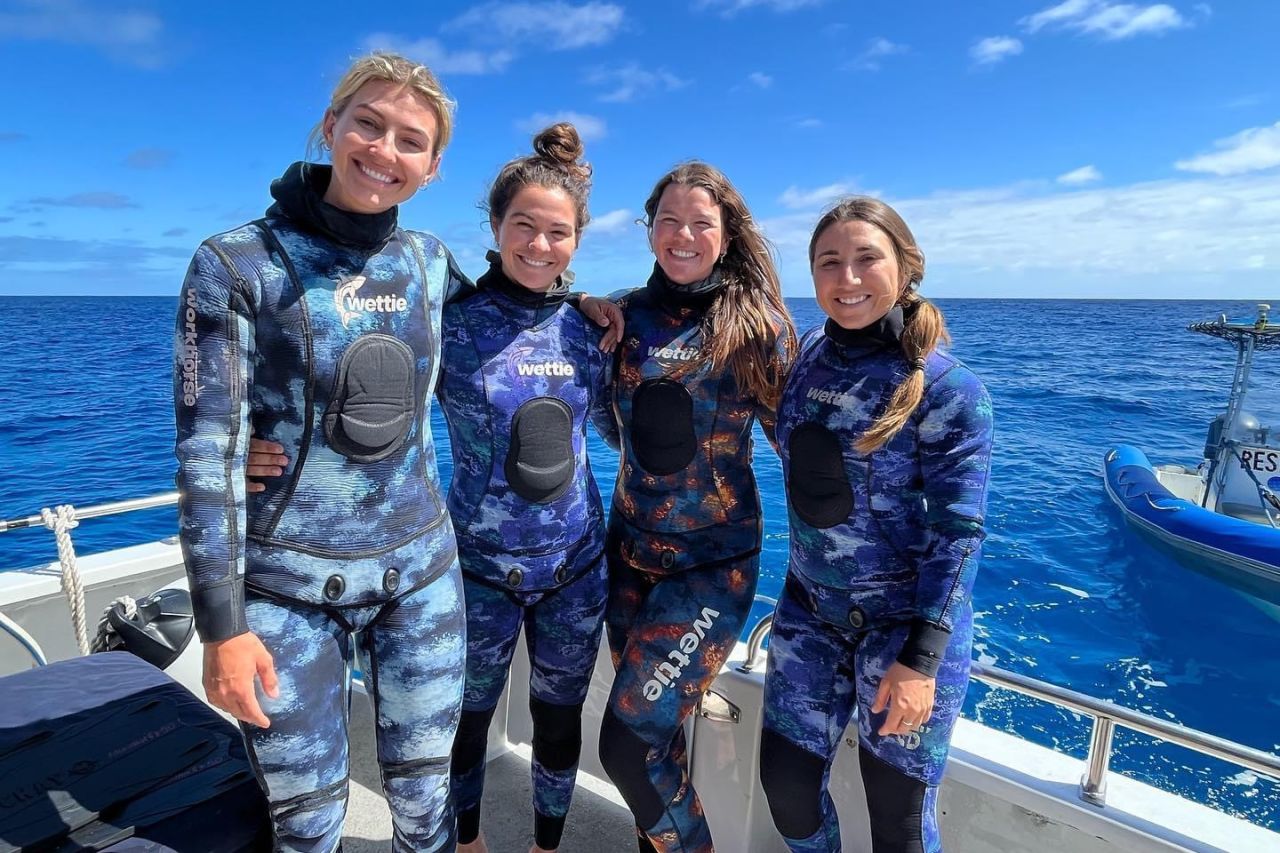
Some of our legendary dive team. Georgia Dayman, myself (Taylah Bruce), Billie Pemberton & Aliya Siddiqi on board Flying Fish V. Credit: Flying Fish V crew/Jai Kennedy
A unique perk of her role is also being able to access remote reefs that possibly no one has ever dived on before, and see what these unexplored places look like. They also make for remarkable underwater encounters.
"The very first time we went out to the Swains, we'd just found an outbreak and I'd never seen anything like this. White coral everywhere and we had our heads down the whole dive culling, and then all three of us happened to look up at the same time and a great hammerhead cruised past slowly. What are the chances we looked up at this exact moment?"
Believe it or not, Taylah actually hated scuba diving when she first tried it. "I was terrified and struggled through my Open Water course, and only forced myself to keep diving because I was studying Marine Science and thought it unacceptable to not be an avid diver. Ten years later I can finally say I feel differently and diving is when I feel most at peace."
Taylah likes to remind herself that despite all the ecological and anthropogenic pressures and challenges that the Reef is facing right now, it is still very much alive and fighting.
"There are so many incredibly healthy sections of the Reef that are still supporting the immense diversity and life that the Great Barrier Reef is known for. It is very much alive, and it still needs us to fight for it."
Top photo: Quick trip onshore to Lady Musgrave Island whilst undertaking COTS work around the reef. Credit: Flying Fish V crew/Georgia Dayman
